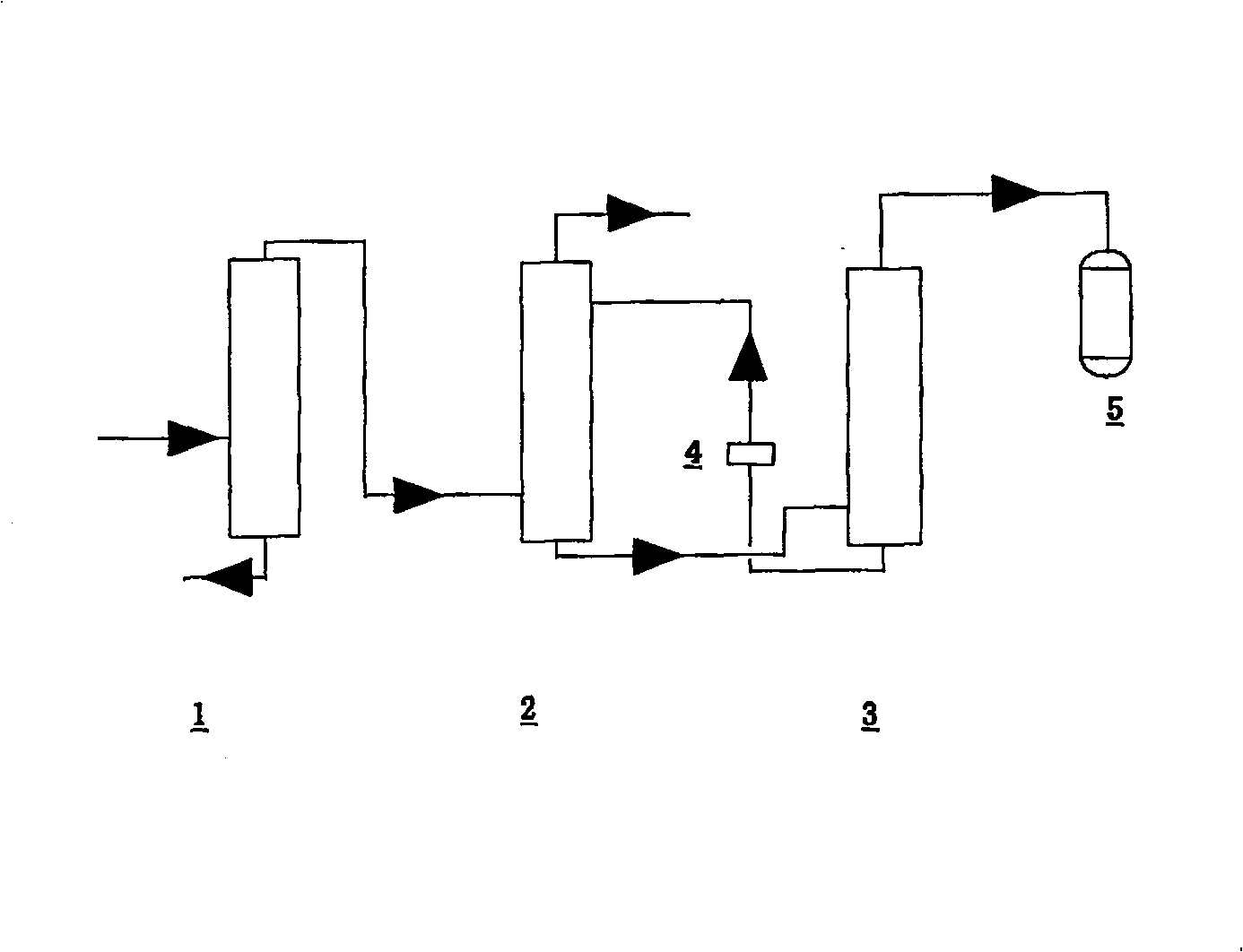Method for separating trifluoroethylene in tetrafluoroethylene production
A technology of trifluoroethylene and tetrafluoroethylene, used in chemical instruments and methods, halogenated hydrocarbon preparation, organic chemistry, etc. methods, etc., to achieve the effect of achieving controllability and improving the phenomenon of random discharge of trifluoroethylene
- Summary
- Abstract
- Description
- Claims
- Application Information
AI Technical Summary
Problems solved by technology
Method used
Image
Examples
Embodiment 1
[0022] like figure 1 As shown, this device is implemented on a 3,000-ton tetrafluoroethylene production device. This process is located behind the tetrafluoroethylene recovery tower. The material gas enters tower 1 from the top of the tetrafluoroethylene recovery tower. The temperature at the top of tower 1 is -15~+ 15°C, the temperature of the tower kettle is 10-50°C, and the liquid-gas ratio is 3-20:1; through the separation of tower 1, more than 90% of tetrafluoroethylene and trifluoroethylene in the material gas are separated, and difluoro-chloro Useful components such as methane return to the original system from the tower kettle;
[0023] Trifluoroethylene and tetrafluoroethylene gather at the top of tower 1 and enter extraction tower 2 from the top of tower 1. Through the extraction of extraction tower 2, trifluoroethylene in the mixed gas of tetrafluoroethylene and trifluoroethylene is extracted. Ethylene molecules are non-polar molecules, and trifluoroethylene molecu...
Embodiment 2
[0027] It is implemented on a 3,000-ton tetrafluoroethylene production plant. This process is located behind the tetrafluoroethylene recovery tower. The material gas enters tower 1 from the top of the tetrafluoroethylene recovery tower. The temperature at the top of tower 1 is -15~+15°C. The temperature is 10-50°C, and the liquid-gas ratio is 7-10:1; through the separation of tower 1, more than 90% of tetrafluoroethylene and trifluoroethylene in the material gas are separated, and useful components such as difluorochloromethane Point returns former system from tower still; Other is with embodiment 1.
PUM
 Login to View More
Login to View More Abstract
Description
Claims
Application Information
 Login to View More
Login to View More - R&D
- Intellectual Property
- Life Sciences
- Materials
- Tech Scout
- Unparalleled Data Quality
- Higher Quality Content
- 60% Fewer Hallucinations
Browse by: Latest US Patents, China's latest patents, Technical Efficacy Thesaurus, Application Domain, Technology Topic, Popular Technical Reports.
© 2025 PatSnap. All rights reserved.Legal|Privacy policy|Modern Slavery Act Transparency Statement|Sitemap|About US| Contact US: help@patsnap.com

